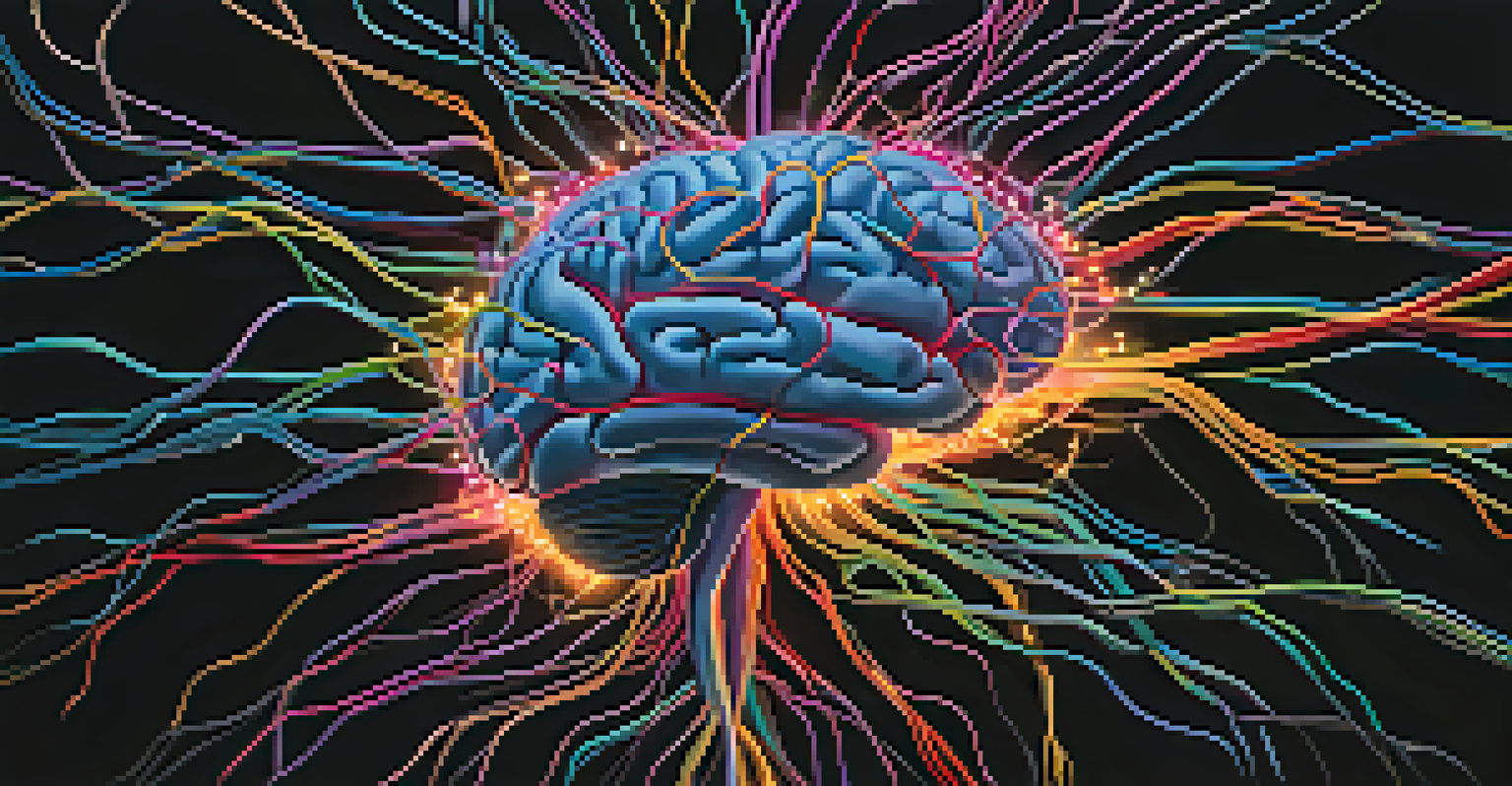Entheogens and Neuroplasticity: A New Frontier in Mental Health

Understanding Entheogens: Nature’s Mind-Altering Substances
Entheogens are substances that can alter consciousness and have been used for centuries in various cultures, primarily for spiritual and therapeutic purposes. These naturally occurring compounds, such as psilocybin from mushrooms or ayahuasca from the Amazon, can create profound experiences that many users describe as life-changing. Recently, science has begun to explore how these substances might help in treating mental health disorders.
The mind is everything. What you think you become.
The growing interest in entheogens stems from their potential to facilitate deep psychological insights and emotional healing. For instance, many people report a sense of clarity and understanding regarding their mental health struggles after an entheogenic experience. This has led researchers to investigate how these experiences might impact brain function and structure, particularly in terms of neuroplasticity.
Neuroplasticity refers to the brain's incredible ability to reorganize itself by forming new neural connections throughout life. This adaptability is crucial for learning and recovery from trauma or injury. By harnessing the power of entheogens, researchers hope to unlock new pathways for healing in the brain, potentially leading to breakthroughs in mental health treatment.
Neuroplasticity: The Brain’s Natural Healing Mechanism
Neuroplasticity is like the brain's ability to rewire itself after learning something new or overcoming challenges. Imagine your brain as a bustling city with roads connecting various parts; when a new road is built, or an old one is repaired, traffic can flow more smoothly. This phenomenon plays a vital role in how we adapt to new experiences and recover from injuries, including psychological ones.

In the context of mental health, neuroplasticity allows individuals to break free from harmful thought patterns and behaviors. For instance, someone dealing with depression might find that engaging in new activities or therapies helps them create positive mental pathways. This is where entheogens come into play, as they could potentially accelerate this process by providing transformative experiences that foster neuroplasticity.
Entheogens Aid Mental Health Healing
Entheogens, such as psilocybin and ayahuasca, show promise in enhancing psychological insights and emotional healing for mental health disorders.
Research has shown that psychedelics can lead to the growth of new synapses, or connections between neurons, which is a key indicator of neuroplasticity. By promoting this growth, entheogens may help individuals reframe their mental health narratives and develop healthier coping mechanisms. This could revolutionize the way we approach mental health treatments, moving away from traditional methods towards more holistic and integrative solutions.
The Science Behind Entheogens and Neuroplasticity
Studies on entheogens have revealed fascinating insights into how they interact with the brain's chemistry. For example, psilocybin has been shown to increase the levels of serotonin, a neurotransmitter that significantly affects mood and emotional regulation. This surge in serotonin not only enhances feelings of well-being but may also lead to structural changes in the brain that support neuroplasticity.
Your brain is a work in progress, and you can influence its development by what you choose to think and do.
Furthermore, entheogens can temporarily disrupt the brain's default mode network (DMN), which is associated with self-referential thinking and rumination. By quieting the DMN, users may experience a sense of interconnectedness and a shift in perspective that fosters healing. This reset can pave the way for new thought patterns and emotional responses, reinforcing the brain's ability to adapt and change.
The implications of these findings are profound, as they suggest that entheogens could serve as powerful tools in psychotherapy. By integrating these substances into therapeutic settings, mental health professionals may unlock new possibilities for healing, helping clients navigate their emotional landscapes more effectively. This confluence of science and spirituality is paving the way for a new frontier in mental health.
Case Studies: Real-Life Transformations Through Entheogens
Numerous individuals have shared transformative experiences after engaging with entheogens in therapeutic contexts. For instance, some veterans suffering from PTSD have reported significant improvements in their symptoms after participating in guided psilocybin sessions. These anecdotes highlight the potential for entheogens to foster healing in ways traditional treatments may not.
One notable case involved a woman who battled severe depression for years. After participating in a clinical study involving ayahuasca, she described experiencing a profound sense of release and clarity. This newfound perspective helped her address underlying traumas and ultimately led to lasting changes in her mental health.
Neuroplasticity Enables Recovery
Neuroplasticity, the brain's ability to reorganize itself, plays a crucial role in overcoming harmful thought patterns, aided by transformative experiences from entheogens.
These case studies serve as powerful reminders of the potential of entheogens to effect real change in people's lives. While more research is needed to understand the mechanisms at play fully, these stories inspire hope for those struggling with mental health challenges. They also emphasize the importance of responsible use and guided experiences to maximize benefits while minimizing risks.
Challenges and Considerations in Entheogen Research
Despite the promising potential of entheogens, several challenges remain in their research and application. One of the primary hurdles is the legal status of many of these substances, which can hinder scientific exploration. As laws evolve, it's crucial for researchers to navigate these regulations while ensuring safety and ethical practices in their studies.
Another consideration is the need for comprehensive frameworks surrounding the use of entheogens in therapeutic settings. Proper guidance and support are essential to ensuring that individuals have a safe and meaningful experience. This means training mental health professionals to integrate entheogens into their practice responsibly, which can be a complex process.
Moreover, researchers must also consider the variability in individual responses to entheogens. What works wonders for one person may not yield the same results for another. Understanding these nuances is critical for developing effective treatments and ensuring that entheogens are employed safely and effectively in mental health practices.
The Future of Mental Health: Integrating Entheogens and Therapy
The integration of entheogens into mental health treatment holds the promise of creating more personalized and effective therapies. As research continues to unfold, we may see innovative treatment modalities that combine traditional psychotherapy with entheogenic experiences. This synergistic approach could empower individuals on their healing journeys, offering them new tools to navigate their mental health challenges.
Imagine a world where therapists can incorporate guided entheogenic sessions into their practices, helping clients explore their inner landscapes in a safe environment. This could lead to deeper insights and more significant breakthroughs in understanding oneself. By fostering neuroplasticity, we may enable clients to develop healthier coping mechanisms and emotional resilience.
Research Faces Legal Challenges
Despite the potential benefits of entheogens in therapy, legal restrictions and the need for responsible practices pose significant challenges to their research and application.
As we stand at this new frontier in mental health, it's essential to continue the conversation around entheogens and their potential benefits. By fostering an open dialogue and encouraging responsible research, we can work towards creating a future where mental health care is holistic, compassionate, and effective for all.
Conclusion: Embracing a New Paradigm in Mental Health Care
The exploration of entheogens as a means to enhance neuroplasticity represents a compelling shift in how we understand and approach mental health. By embracing this new paradigm, we open ourselves to a world of possibilities where healing can occur on deeper levels. This journey requires us to remain curious and compassionate towards ourselves and others as we navigate the complexities of mental health.
As research continues to reveal the potential of entheogens, we must also advocate for safe and responsible practices. This includes fostering environments where individuals can explore these substances with the guidance of trained professionals. Ultimately, the goal is to create a supportive community that prioritizes mental well-being and personal growth.

In summary, the intersection of entheogens and neuroplasticity offers a hopeful glimpse into the future of mental health care. By acknowledging the power of the mind and the potential for change, we can work towards creating a more inclusive and effective approach to mental health treatment that honors each individual's unique journey.